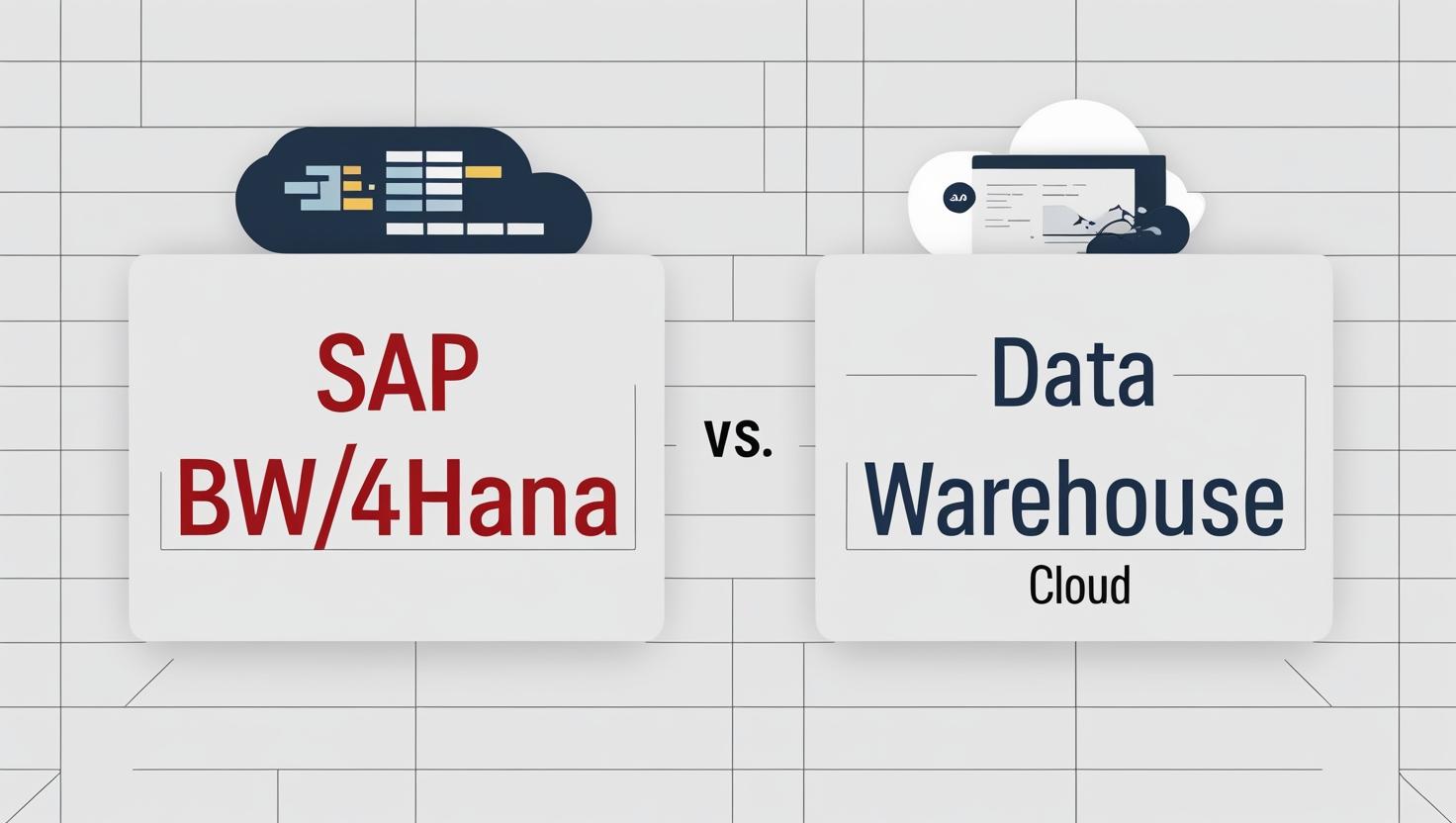
SAP Data Warehouse Cloud vs SAP BW/4HANA
The enterprise data landscape is shifting rapidly. As data architectures evolve, many businesses are reconsidering where to invest next in order to stay competitive, agile, and data-driven.
SAP is addressing these needs with two leading solutions: SAP BW/4HANA and SAP Data Warehouse Cloud. While both support modern data strategies, they serve different use cases and operating models.
SAP BW/4HANA: structured, governed, and powerful
SAP BW/4HANA is the next-generation successor to the traditional SAP Business Warehouse. It’s purpose-built to run on the SAP HANA in-memory database, offering high performance for large volumes of structured data. This platform is ideal for organisations already invested in the SAP ecosystem, especially those with complex, centralised data models and rigorous governance requirements.
BW/4HANA is well suited to IT-led environments where data modelling, integration, and transformation are centrally managed. It supports advanced ETL capabilities and offers deep integration with SAP ERP systems, making it a strong choice for financial reporting, compliance, and other mission-critical workloads.
SAP Data Warehouse Cloud: flexible, fast, and user-friendly
SAP Data Warehouse Cloud (DWC) represents SAP’s vision for the future of data warehousing. It’s a cloud-native solution built on the SAP Business Technology Platform, designed to support hybrid and distributed data environments. DWC enables organisations to connect data from a wide range of sources, both SAP and non-SAP, and unify it within a single semantic layer.
The key advantage of DWC lies in its user-centric design. Business users and analysts can explore and model data themselves without relying on IT for every change. This self-service approach speeds up decision-making and fosters a more agile, data-driven culture. It also enables rapid deployment with minimal infrastructure, making it ideal for organisations wanting quick wins or piloting new analytics projects.
Architecture and control: traditional vs decentralised
At a technical level, BW/4HANA supports a highly structured, centralised approach. It excels in environments where consistency, repeatability, and tight integration with core systems are essential. SAP Data Warehouse Cloud, in contrast, adopts a decentralised and collaborative model. It’s designed to scale elastically and adapt quickly to changing data needs. This is particularly valuable in industries where data sources are constantly growing and evolving.
Implementation speed and agility
BW/4HANA typically involves a longer implementation cycle, especially when migrating from legacy systems. It’s a strategic, long-term investment that delivers robust performance and governance. DWC, on the other hand, allows for faster rollouts and iterative development. It’s ideal for departments that need to innovate quickly without overhauling core systems.
A complementary approach for many
Rather than viewing these platforms as competitors, many organisations are finding value in using both platforms. SAP BW/4HANA continues to serve as a foundation for core reporting and trusted data, while SAP Data Warehouse Cloud adds a flexible layer for extended use cases, new data sources, and cross-departmental collaboration.
Choosing the right platform for your goals
Your decision will depend on several factors: the complexity of your current data landscape, your cloud readiness, your need for speed and flexibility, and how decentralised you want data access to be. If your business is heavily reliant on structured SAP data and long-term governance, BW/4HANA remains a strong and stable choice. If you’re looking to empower business users, tap into diverse data sources, and fully leverage the cloud, Data Warehouse Cloud offers a future-ready alternative.
Looking ahead
SAP is investing in cloud-native innovation, and platforms like Data Warehouse Cloud are central to that strategy. BW/4HANA remains critical for organisations with established SAP environments. The real opportunity lies in understanding how these platforms can work together to create a modern, responsive, and scalable data architecture that fits your business.
